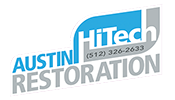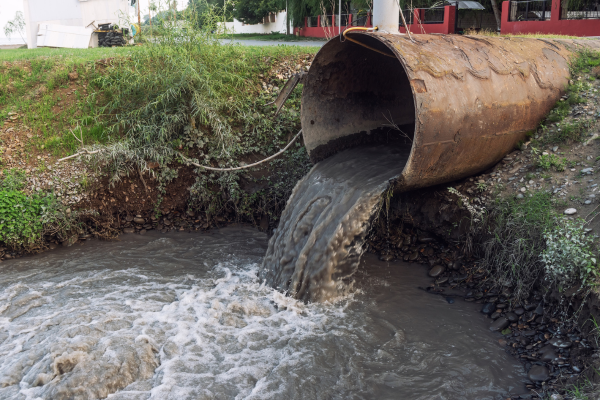While many homeowners are quick to address obvious water damage, fewer are prepared for the consequences of sewage backup inside their homes. Beyond the unpleasant odor and visible mess, sewage overflow introduces serious health concerns and structural risks to the property. In this post, we’ll focus on the practical understanding of how sewage backup happens, the dangers it can pose to your health, steps to take as a homeowner during an incident, and how professionals solve and prevent future problems. Awareness and preparation can reduce both long-term damage and personal risk in dealing with one of the most hazardous household emergencies.
What causes a sewage backup?
Sewage backup usually happens when something prevents wastewater from moving through your home’s plumbing system. This blockage or overload causes wastewater to return up through toilets, sinks, and floor drains. The problem can be caused by a single point of failure close to your home’s drains, or it can be connected to larger problems in the main sewer line. Tree roots, grease buildup, foreign materials, structural pipe damage, and heavy rainfall all contribute to such issues.
Tree roots are one of the most common causes. Even small cracks in underground pipes can leak enough moisture to attract roots. Over time the roots grow into the pipe and block the flow of wastewater. Grease buildup is another issue homeowners often overlook. Cooking oils and fats that are poured down the drain solidify as they move through the cooler parts of the pipe system, creating gradual buildup that catches debris and grows over time.
Flushing inappropriate items also stresses sewer systems. Wipes labeled as flushable don’t break down efficiently, especially in older pipe networks. Feminine hygiene products, paper towels, and other materials don’t dissolve in water and instead clump with grease and foreign particulates to create a clog.
Health risks from sewage exposure
Contact with raw sewage exposes anyone in the property to biohazards. Sewage contains bacteria, viruses, parasites, and toxic substances that can seriously affect health. Dirty water from a backup is classified as Category 3 Black Water—meaning it contains contaminants that present severe health effects when touched, inhaled, or ingested.
Common bacteria found in sewage include E. coli and Salmonella, both of which react strongly in the human body. Viruses like Hepatitis A and Norovirus frequently spread in unsanitary water. Parasites such as Giardia and Cryptosporidium are often present as well. Exposure risks increase when people try to clean the area without proper protection, or when they come into contact with contaminated surfaces or absorbent materials.
Respiratory irritation is another concern. Cleaning methods like spraying or vacuuming can send aerosolized particles into the air, making it possible to inhale toxic bacteria. Mold growth also rapidly begins within 24 to 48 hours in untreated areas, further threatening indoor air quality.
Immediate steps for homeowner safety
When facing a sewage backup, personal safety must be the first priority. Anyone in the affected area should exit and keep others out. Children, elderly individuals, and people with weakened immune systems should avoid all contact with contaminated areas.
The next step is to cut off the water supply to the home. This prevents additional wastewater from being flushed into an already blocked system. Avoid using any plumbing fixtures, including toilets, sinks, or washing machines. Turning off the electrical power near the affected zone eliminates the risk of electrical shock, especially if standing water is present.
Do not attempt to clean the mess on your own unless you’re trained for hazardous cleanup. Avoid direct skin contact, and certainly do not use a household vacuum or fan, which might spread contaminants. The safest approach is keeping the area sealed and waiting for professionals to assess and treat the problem.
The need for professional sewage solutions
Cleaning up after a sewage backup requires more than just drying the space or mopping up the water. Contaminated materials must be thoroughly removed, disinfected, and in many cases, replaced. Professional sewage solutions go much deeper than surface cleanup. Trained technicians carry specialized gear including protective suits, respirators, commercial-strength disinfectants, and equipment for deep water extraction and decontamination.
One of the most important parts of this kind of remediation is inspection. Professionals trace the origin of the blockage or breakage using advanced tools like sewer line cameras. These allow them to detect whether the problem originated inside your property’s connections or from a municipal source. Repair decisions stem directly from these findings and can involve anything from simple snaking to full-scale pipe repairs or replacements.
The decontamination process itself is methodical and guided by specific health and safety standards. Carpets, insulation, and drywall often have to be removed. Any materials saturated by sewage cannot be reliably cleaned. Once cleanup is completed, teams apply antimicrobial agents to remaining surfaces to prevent mold and bacterial regrowth. This not only protects human health but also strengthens the long-term safety of the structure.
Many homeowners are surprised to learn that some homeowner insurance policies cover sewage backup, but it often depends on adding specific endorsements. Professionals also help document damage and file insurance claims more accurately, minimizing your out of pocket cost.
Why sewage backup affects certain homes more
Older properties often suffer from corroded or outdated pipe systems that are more prone to cracks, breaks, and root intrusion. Homes with clay or cast iron pipes frequently face recurring sewage problems. These materials degrade with age or become brittle and susceptible to blockage from shifting soil, which is common in areas with heavy rain patterns.
Basements are typically the first part of the home to get flooded during a sewage backup. Their lower elevation in the plumbing structure makes them the path of least resistance for reversed flow. Homes with finished basements suffer especially devastating consequences when furniture, drywall, and flooring materials are compromised by toxic waste.
Also, homes located in areas served by combined sewer systems, where stormwater and sewage share the same pipes, face greater risks during rainstorms. When the system becomes overloaded with stormwater, it backs up into homes because it has no outlet. Municipal systems are constantly updated, but many still struggle with this fundamental design flaw.
Preventative maintenance strategies
Reducing the chances of sewage backup in your home starts with simple but consistent routines. Avoid pouring grease, oil, or fat down kitchen drains. Instead, collect these materials in a disposable container and throw them out with the garbage. Keep wet wipes, feminine hygiene products, and other solids out of toilets, even if package labels say they are flushable.
Tree maintenance is another key step. Regularly inspecting the green space around your home and cutting invasive roots can go a long way in protecting your underground plumbing. If you’re planting new trees or shrubs, avoid positioning them near sewer lines. Some municipalities will provide maps to help homeowners avoid utility line conflicts.
Installing a backwater valve on your home’s main sewer line is a powerful, long-term solution. This device allows wastewater to flow out but automatically shuts if sewage begins flowing the other direction. It’s especially recommended for properties in flood-prone areas or those with finished basements.
Routine inspections can identify growing problems before they become emergencies. A yearly or biannual pipe camera inspection can reveal grease accumulation, root growth, and other issues you can’t see from visible drains. Cleaning services like hydro-jetting can clear pipes using pressurized water without damaging the infrastructure.
Maintaining healthy communication with your neighbor and municipal department matters as well. Often when one home faces a backup, others on the same line experience related problems soon after. Keeping coordinate when issues appear can help you hold city services accountable or share resources in emergencies.
Understanding the difference in response quality
Not all cleanup services provide the same quality of treatment. Homeowners sometimes make the mistake of hiring companies without sewage-specific training. While general water damage companies might be able to extract moisture, they usually don’t handle Category 3 biohazards or comply with industry-required sanitization procedures.
Certification matters. Look for companies trained under the Institute of Inspection Cleaning and Restoration Certification (IICRC) or who follow Environmental Protection Agency (EPA) guidelines for hazardous waste. This training ensures they can safely remove contaminated waste and apply treatments that reduce future health risks. It also means proper disposal of waste according to local laws, preventing secondary contamination outside your home.
Response time also separates quality providers from less reliable ones. Since contamination levels increase by the hour, a strong provider offers 24/7 response and arrives on-site with working equipment the same day. Trustworthy contractors also provide photos and written reports of the damage, which can save time during insurance processing.
Some large-scale providers offer temporary plumbing solutions so your family can stay in the home safely even while work is being completed. Others specialize in reconstruction should parts of the wall, flooring, or cabinetry need to be removed. Working with a single contractor who handles both remediation and repair often costs less and cuts down timeline delays.
What to do after professional cleanup
Once a cleanup crew has completed work, there are still important steps to take. Airing out the area can reduce lingering odors and help dry damp building materials that did not need removal. Using dehumidifiers and fans is safe at this stage as long as all contaminated surfaces are already disinfected or sealed.
Replace any removed flooring or wall material with water-resistant alternatives. Finished basements especially benefit from using vinyl flooring, mold-resistant drywall, and raised furniture legs or waterproof storage. This can make future incidents less damaging, both financially and structurally.
Consider scheduling plumbing maintenance within six months of the repair work. This extra step helps confirm that any blockage, pipe shift, or valve installation continues to hold up under daily use. While future backups cannot be entirely prevented in all cases, your home can be much more prepared to face any challenges that arise after cleanup.
Sewage backups are among the most hazardous and disruptive home emergencies, but recovery is possible with fast action and skilled help. Clear blockages, repair damage, and make smart changes now to protect your home and your health in the future. Preparedness saves more than money, it keeps your living space safe for every person inside it.


